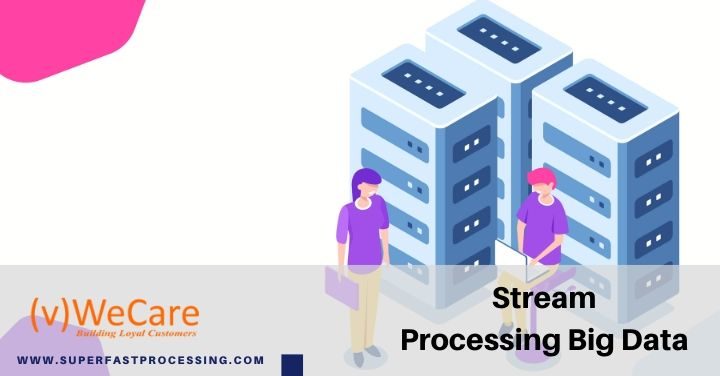Modern-day businesses operate at breakneck speeds and generate massive amount of data. Every piece of information embedded in data is priceless and it is important to act upon it fast to maximize its value. In order to extract the information, Big Data analytics are required. As Big Data tech has grown leaps and bounds in the recent years, it can prove invaluable for a business operation. But, it comes with its own challenges: processing of data being the first and foremost. Nowadays, two processing methodologies are utilized by companies – batch processing and stream processing big data.
Batch Processing vs. Stream Processing
Batch processing is a computing technique that involves the processing of blocks of data stored in storage devices like HDD or SSD. Hadoop Map Reduce platform is the preferred batch processing platform. Bach processing is suited to those scenarios, in which, you need to find in-depth and detailed insights from a large volume of data. This processing technique works upon complete or almost entire data stored in the system. The latency of batch processing is generally in minutes or hours.
Stream processing big data is extremely useful in scenarios where you need to make sense of information passing through a system in real-time. It allows business analysts to detect any change in the condition of a system and act upon it in real-time. There are several open source platforms that cater to the requirement of stream processing with Apache Kafka being the most popular. Stream processing is extensively used in tasks like fraud detection, real-time monitoring of HVAC systems and residential surveillance. Stream processing works over data in a rolling window and processes the most recent transaction. The latency of stream processing is generally in seconds, and sometimes even in microseconds.
While both these processing techniques have their own niche and purpose, real-time stream processing has become increasingly popular in Big Data analytics used by financial and telecom companies.
Implementation of Stream Processing
To implement stream processing, it is essential that you have the following capabilities:
- Relational Data Base: MemSQL is the relational database that works best in the process of using data streams for computing real-time data. As it is the fastest database for operational analytics, it has become the mainstay of stream processing big data
- High-Performance Hardware: Stream processing requires very specific hardware for its implementation. The traditional modes of storages (HDD and SSD) do not work well in the process of using data streams for deriving real-time insights. Instead RAM-based in memory storage systems are required for instant fetching of data. Procuring such hardware in-house can be a major hassle for an entrepreneur. Apart from high capital investments, you also need to spend periodically on maintenance to ensure consistency in real-time processing. Therefore, it is best to offload the work to a seasoned professional like Superfastprocessing.
- Horizontal Scalability: The stream processing big data tasks do not stay constant over a period of time as the ingested data can rise at any stage. Any increase in the data volume needs to be addressed by scaling the server resources horizontally i.e. adding extra servers to support the increasing load.
We, at Superfastprocesing, are fully-equipped to scale our operations to meet ever-growing requirements of our clients.

